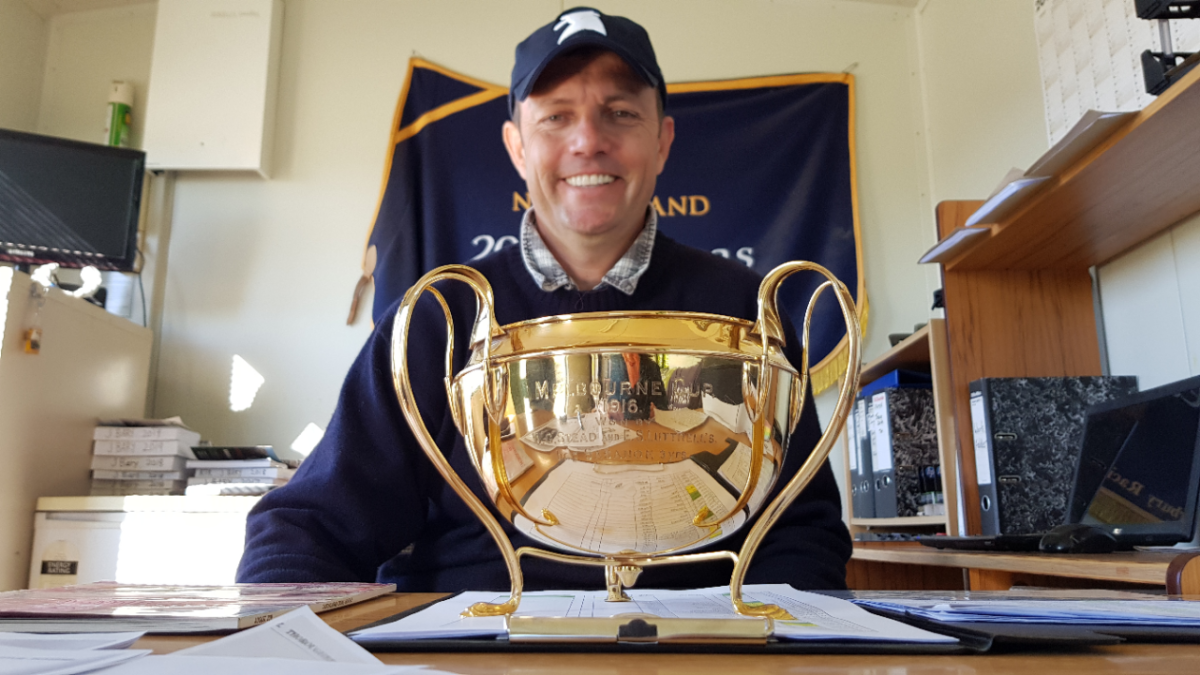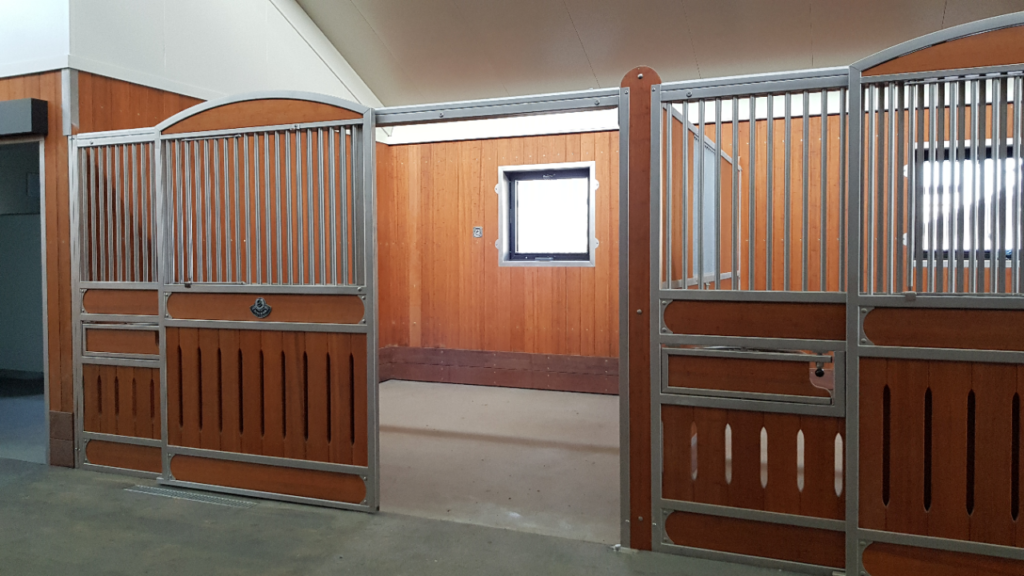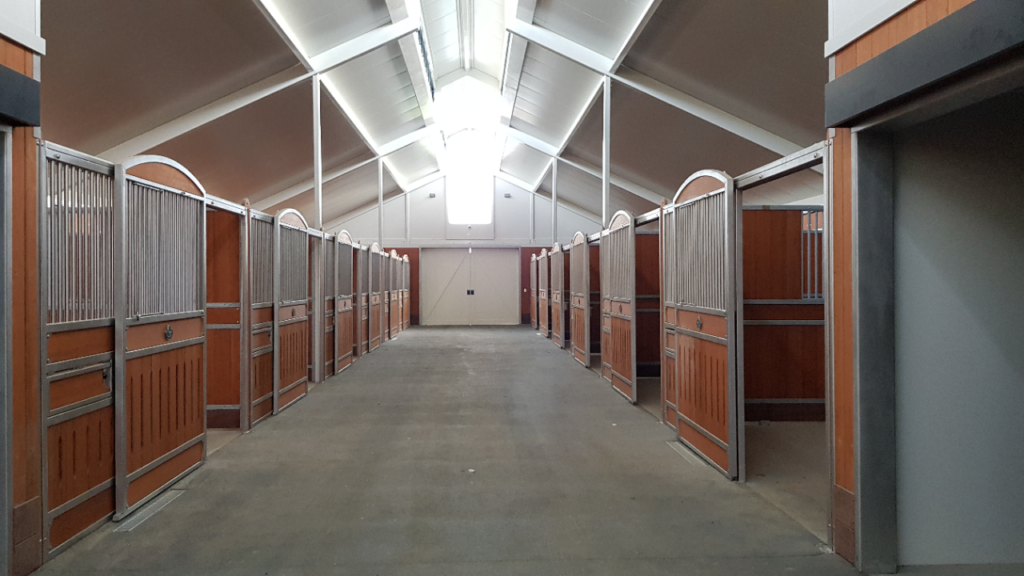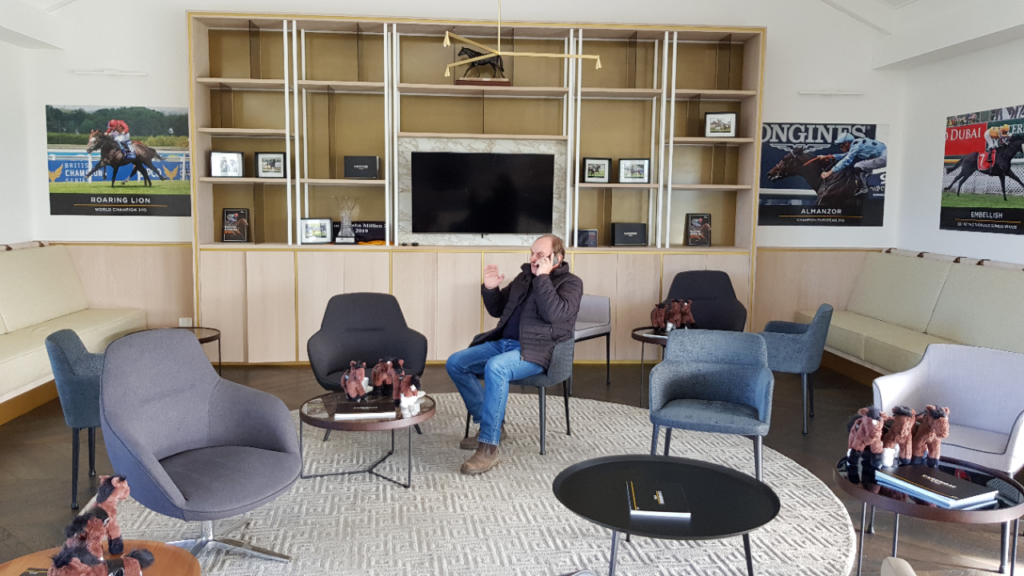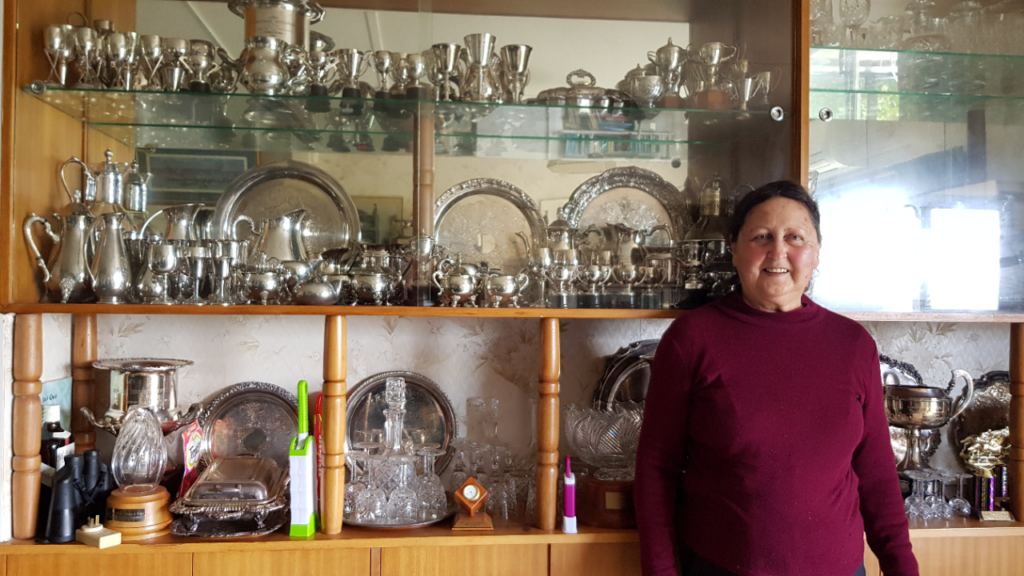John Bary with the 1916 Melbourne Cup won by Sasanof for his great-grandfather W.G. Stead
by Brian de Lore
Published 30 August 2019
When the Loveracing.nz webpage writer asked Hastings trainer John Bary, “How did you get involved in racing,” for the trainers’ profile page, the astute 49-year-old horseman’s response was both brief and modest.
Bary’s three-word reply: “Bred into it,” was acutely truthful but it also rates as the shortest and most understated answer in racing – in full elaboration the response may have filled half a book. In horse breeding vernacular, Bary is classically bred and is now maturing into the force associated with his illustrious forebears.
Having slowly built up the strength of his stable of 30-odd horses, Bary commences only his 11th full season of training with firepower that should result in his best yet, notwithstanding that extraordinary 2010-11 season in which Jimmy Choux made his mark with a string of successes including the Group One NZ 2000 Guineas at Riccarton and New Zealand Derby at Ellerslie.
Following 13 years as a professional international polo player and a subsequent seven years of farming, the calling to train proved too strong, and Bary took out a trainer’s license during the 2008-09 season in which he turned out seven winners. In the early years, he would float his horses from great-uncle Bob Stead’s Sasanof Stud property to and from the Hastings track.
The Hombre was Bary’s first good horse, winning seven races which included a trip to Australia resulting in a victory in the Rough Habit Plate, albeit the final decision came out of the protest room.
By the time Jimmy Choux was a two-year-old, Bary was already transitioning his operation to his well-appointed training facility on 65 acres of free-draining pumice soils. The highlight is the 1300 metre plough on the inside of a beautifully maintained grass track with a straight of 330 metres.
The Bary stable is located in the lime works area of Paki Paki and is overlooked by a glorious hillside property once farmed by his grandfather Alec, and now in the ownership of stable client Ivan Grieve.
The property has come of age, the staff are first class, the pedigrees of his charges are now stronger than ever, and Bary has recognised the power of digital media and is servicing his owners with efficient regularity. Racing Manager Mike Sanders has been with Bary eight years, and owners receive an ample flow of information delivered via the high-tech gadgets.
“Let the owner know as much as we know as soon as possible,” said Barry on the question of his approach to owners. “In my book, the one-win horse has no long term future and horses are seven days a week including Christmas Day and Boxing Day and you don’t want to be getting up for those horses – it doesn’t matter if a reject goes to the South Island and wins two or three.
We are big on communication and ninety-five percent of our owners are businessmen – the farmers with one or two horses have dropped off. The farmers who previously did race the odd one or two have been replaced by a new generation of farmers who mainly don’t want to know about racehorses.”
In the 2018-19 season, Bary trained 26 winners at the excellent strike-rate of 6.65. With an even stronger team this season that figure could be bettered – Saturday at Hastings could finish the month of August off strongly with for Bary with10 acceptors including the highly promising On Show and The Fugitive.
John’s mother Ann, at the age of 80 and who held a permit to train before John took out his license, is still an integral part of the daily Bary stable operation, having lost none of her enthusiasm to be around the horses.
Ann’s father Alec was the brother of Bob Stead of Sasanof Stud -their father and John’s great-grandfather was W.G. Stead who won the 1916 Melbourne Cup with Sasanof – the only Cup winner in history to have won coveted two-miler on a Saturday after weather forced a postponement.
John’s great-great-grandfather was G.G. Stead who became a legend in his own lifetime. He was born in London in 1841 and arrived in New Zealand in 1866 at the age of 25. Even to this day it is acknowledged that no single person has ever done more for the racing industry than George Gatonby Stead.
G.G. Stead was the epitome of integrity and soon after his arrival was appointed an honorary treasurer of the Canterbury Jockey Club. He became the most successful owner New Zealand has ever known and made frequent trips to Australia to buy bloodstock as well as importing stallions and mares from England.
G.G. Stead was the principal supplier of winners for 2018 Hall of Fame jockey inductee Tod Hewitt, and he also employed Dick Mason as his private trainer. Mason set a long-standing record for the number of classic winners trained – due almost entirely to the success of Stead.
The original Stead was a racing partner of Henry Redwood and together they were pioneers of sending horses across the Tasman. In 1879 they jointly sent two horses to run in the Melbourne Cup. One broke down and didn’t start while the other, named Le Loup, ran but had its chances ruined when the saddle slipped.
G.G. Stead died in 1908 aged 67. The ensuing dispersal sale of his bloodstock realised the then massive amount of 50,000 guineas. One hundred and fifty-three years after the arrival of his great-great-grandfather in New Zealand, John Bary is gearing up to enhance the family tradition, and Saturday at Hastings may well be the launching pad for a memorable season.

